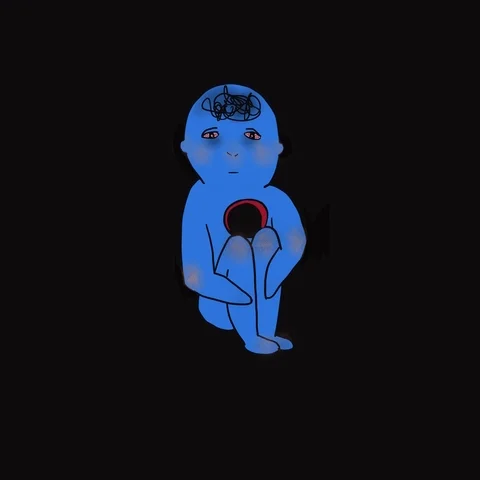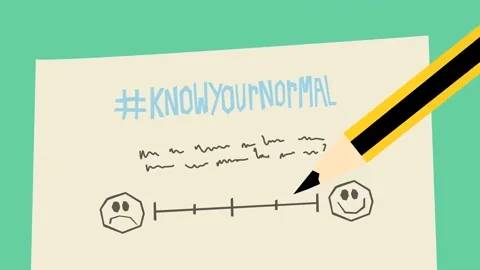
This logo isn't an ad or affiliate link. It's an organization that shares in our mission, and empowered the authors to share their insights in Byte form.
Rumie vets Bytes for compliance with our
Standards.
The organization is responsible for the completeness and reliability of the content.
Learn more
about how Rumie works with partners.
Ever felt your heart pounding or a wave of nervous energy wash over you? Maybe you've found yourself short of breath, feeling tense, or unable to concentrate?
If you've experienced these overwhelming feelings, you're not alone — welcome to the anxiety attack club.
Unlike a panic attack, which can strike suddenly, an anxiety attackoften builds up in response to stress or worry.
While it can be frightening, fear not! Armed with the right strategies, you can learn how to calm down from an anxiety attack by tackling them head-on and loosening their grip on your life.

1. Grounding and Sensory Techniques
Grounding techniques are methods to bring your mind back to the present moment, especially during an anxiety attack.
5-4-3-2-1 Technique
Engage your senses by identifying:
5 things you can see
4 things you can feel
3 things you can hear
2 things you can smell
1 thing you can taste
Object Focusing
You can also ground yourself by picking up a nearby object and concentrating on its texture, color, and shape, helping to pull yourself out of the anxiety spiral.

Learn how to calm down from an anxiety attack with 30 grounding techniques to quiet distressing thoughts.
Quiz
Which of the following might be most effective for grounding?
Grounding is about directly engaging your senses to shift attention from anxious thoughts to physical reality. You'll want to focus on tangible sensations to help draw your mind to something concrete and immediate.
2. Deep Breathing
Deep Breathing is important to calm the body's fight-or-flight response during an anxiety attack. It helps signal to your body that it's safe, which can help reduce your symptoms.
Box Breathing
Inhale for 4 seconds
Hold for 4 seconds
Exhale for 4 seconds
Hold again for 4 seconds
Belly Breathing
Place a hand on your stomach and focus on taking deep breaths to calm your nervous system.

3. Progressive Muscle Relaxation
4. Positive Affirmations and Self-Talk
Positive affirmationscan help interrupt the negative thinking that fuels anxiety attacks.
Empowering Phrases
Repeating phrases like "This feeling will pass," or "I'm in control," reminds you that anxiety attacks are temporary.
Calming Language
Use soothing language with yourself, such as "I've been through this before, and I can handle it," to reinforce your resilience.

Learn how to calm down from an anxiety attack with 99 positive morning affirmations you can use daily.
Quiz
Which affirmations could help during an anxiety attack?
Remember to stay optimistic and don't worry about the past or future!
5. Visualization and Guided Imagery
Shifting your focus to a calming mental image can help slow down the anxiety response.
Imagine a peaceful scene, like a beach, forest, or your happy place. Focus on sensory details to immerse yourself fully in the experience.

Learn how to calm down from an anxiety attack with these resources for guided imagery:
6. Physical Movement
Movement can burn off the adrenaline released during an anxiety attack, calming both your body and mind.
Light Exercise
Engaging in light exercise, like a short walk, stretching, or yoga, can release tension and help you get rid of excess energy caused by anxiety.
Grounding Through Movement
Simple actions like tapping your fingers, shaking your hands, or stomping your feet can help reconnect with your body and the present moment.

7. Create a Calming Toolkit
Using familiar, comforting objects can help soothe anxiety when it arises.
If anxiety attacks are common for you, consider putting together a toolkit of items that bring you comfort — perhaps a stress ball, scented lotion, or a journal and pen.
You can also prepare non-physical items on a device, like a piece of music or a meditation video.
Keep your toolkit readily available to engage your senses and distract yourself when anxiety strikes.

Quiz
Which of the following items would be a good choice for a calming toolkit? Select all that apply:
A calming toolkit is full of personalized items that help make you feel better during stressful moments.
Take Action
You have the power to navigate through anxiety and reclaim your peace of mind. Remember, it's all about finding what works for you and taking those first steps toward calm. Embrace the strategies that resonate with you and know that you're not alone on this journey!

This Byte has been authored by
Christina DaCosta
AI Trainer
Bsc, BEd
